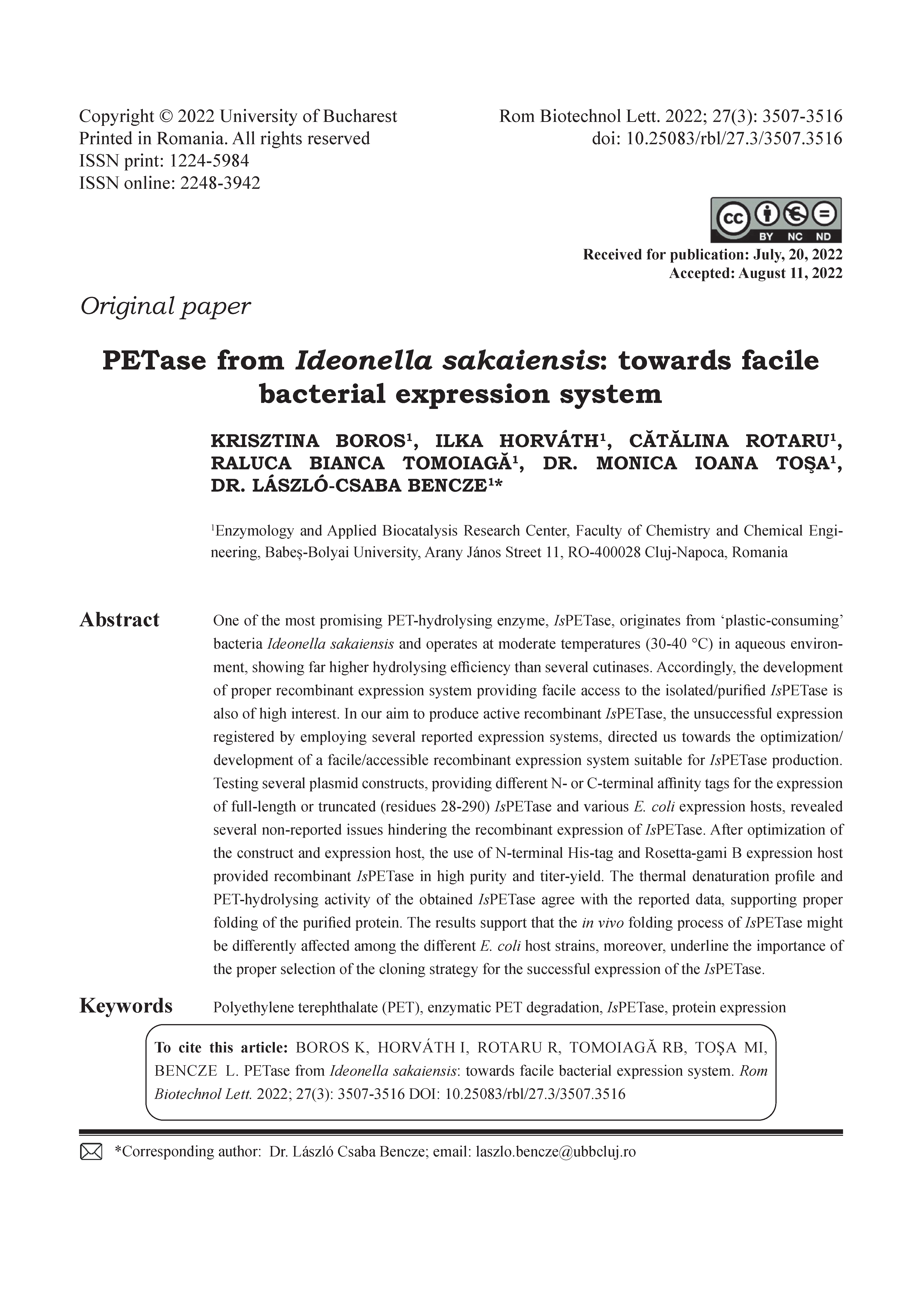PETase from Ideonella sakaiensis: towards facile bacterial expression system
DOI:
https://doi.org/10.25083/rbl/27.3/3507.3516Keywords:
Polyethylene terephthalate (PET), enzymatic PET degradation, IsPETase, protein expressionAbstract
One of the most promising PET-hydrolysing enzyme, IsPETase, originates from 'plastic-consuming' bacteria Ideonella sakaiensis and operates at moderate temperatures (30-40 °C) in aqueous environment, showing far higher hydrolysing efficiency than several cutinases. Accordingly, the development of proper recombinant expression system providing facile access to the isolated/purified IsPETase is also of high interest. In our aim to produce active recombinant IsPETase, the unsuccessful expression registered by employing several reported expression systems, directed us towards the optimization/ development of a facile/accessible recombinant expression system suitable for IsPETase production. Testing several plasmid constructs, providing different N- or C-terminal affinity tags for the expression of full-length or truncated (residues 28-290) IsPETase and various E. coli expression hosts, revealed several non-reported issues hindering the recombinant expression of IsPETase. After optimization of the construct and expression host, the use of N-terminal His-tag and Rosetta-gami B expression host provided recombinant IsPETase in high purity and titer-yield. The thermal denaturation profile and PET-hydrolysing activity of the obtained IsPETase agree with the reported data, supporting proper folding of the purified protein. The results support that the in vivo folding process of IsPETase might be differently affected among the different E. coli host strains, moreover, underline the importance of the proper selection of the cloning strategy for the successful expression of the IsPETase.





